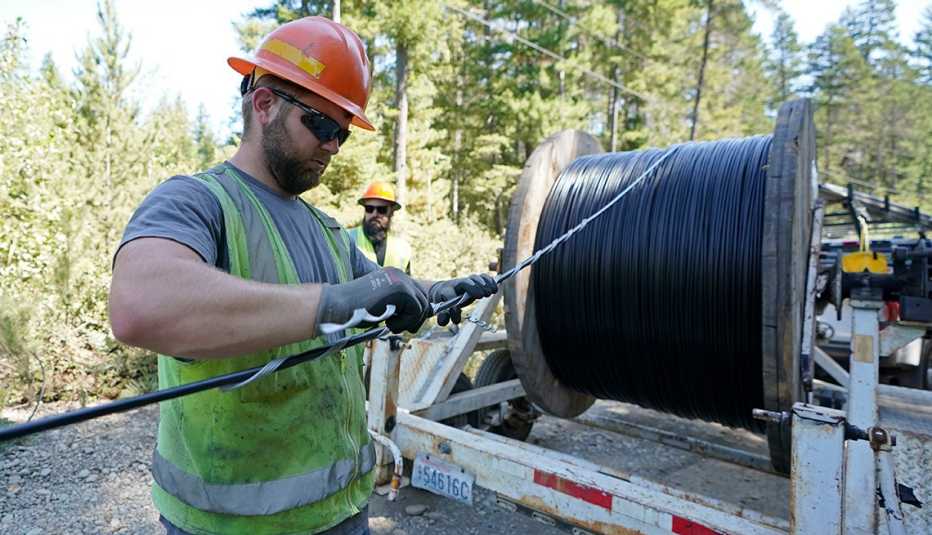Staying Fit
Sometimes during the pandemic, Y-Antoinette Echols ate less so that her great-nephew could eat more.


AARP Membership— $12 for your first year when you sign up for Automatic Renewal
Get instant access to members-only products and hundreds of discounts, a free second membership, and a subscription to AARP the Magazine.
She helped care for the boy and made sure to put him first when, for example, she started to run out of his favorite fruit.
“I might get four blueberries out of a pack,” said Echols, 63, of Englewood, New Jersey. “But that’s OK.”
For Echols and millions of lower-income older adults across the nation, the COVID-19 pandemic made it tougher to get all the food they needed to stay healthy.
The threat of the coronavirus caused senior centers to pause congregate meals, and some food pantries reduced hours or even closed when volunteers stayed home. Many older Americans feared making frequent trips to the grocery store. Some lost jobs. Imposed isolation only made things worse, separating seniors from family members who might be able to help cook or share meals.
“Seniors were forced to make choices and cut corners,” said Jean Toth, executive director of the Food Bank of Northeast Louisiana. “And asking for help is always difficult, so hunger can sometimes be a very silent pain.”
That pain afflicts millions. In 2020, 3.3 million adults age 65 and older were food insecure, according to AARP Public Policy Institute analysis. That’s 6 percent of the senior population.
How increased SNAP benefits helped
For many lower-income older adults, the expanded food stamp benefits created by pandemic relief laws made a big difference in their ability to maintain healthier diets. Here are two examples.
Y-Antoinette Echols
- Age: 63
- Residence: Englewood, New Jersey
- Health issues: Slightly elevated blood pressure, prone to dehydration
- Challenges: Early in the COVID-19 pandemic, some of the small food pantries she depended on closed down, then opened for limited hours. She received regular help from the Center for Food Action, a large nonprofit serving northern New Jersey’s poorest and most vulnerable residents, but at one point, her car broke down and she couldn’t get to the drive-through there. She helps care for a great-nephew and put herself second when food was in limited supply.
- Food aid help: For years, she received $15 a month in aid from the federal Supplemental Nutrition Assistance Program, commonly known as food stamps. That went up to $19 a month shortly before the pandemic. With federal and state increases in aid made possible through pandemic relief legislation, her SNAP benefits went up to $204 a month.
- What she has to say: She says she is still struggling financially even as some Americans are beginning to recover from the economic turmoil of COVID: “Things have not gone back to normal for people on the lower side of the median income.”
Mary Andrews
- Age: 84
- Residence: Monroe, Louisiana
- Health issues: High blood pressure, diabetes
- Challenges: Throughout the pandemic, she has depended on the Food Bank of Northeast Louisiana, from which she gets a box of food every month containing canned goods, milk, butter and other staples.
- Food aid help: She used to receive $16 a month in benefits from the federal Supplemental Nutrition Assistance Program. With federal and state increases in aid made possible through pandemic relief legislation, she receives more, but doesn’t know how much, just that she can buy more with her electronic benefit transfer, or EBT, card at the grocery store.
- What she has to say: “It helps me a lot,” she said of the help she gets from SNAP and the food bank. “If the increases continued, it would be a blessing.”
Hunger can be especially deadly for older Americans. David Carr, a geriatrician at Washington University in St. Louis, said failing to get proper nutrition can reduce strength and muscle mass and impair gait, balance and even cognitive abilities. It can also lower immunity, making people more vulnerable to contracting and dying from COVID-19 at a time when the contagious delta variant is surging.
“It’s a vicious cycle,” Carr said. “The more weak you get, the frailer you are.”
During the COVID pandemic, many seniors received boosts in federal government aid that promised to help break that cycle. Emergency allotments were made available to households eligible for the Supplemental Nutrition Assistance Program, commonly known as food stamps, and SNAP’s maximum benefit increased by 15 percent, roughly an additional $27 per person per month for those receiving the maximum benefits.
That 15 percent increase expires at the end of September, after some states already ended emergency allotments. For many people who receive SNAP benefits, the loss in increased pandemic aid could be offset by the recently approved change to the federal Thrifty Foods Plan formula, which determines how much money a household may receive in SNAP assistance. The largest benefit a one-person household could receive under the new plan will be $250 per month (or $2.74 per meal), up from a maximum of $234 a month (or $2.56 per meal), excluding all the pandemic economic relief benefits that are ending.
Challenging times for older adults
The boost in SNAP food aid during the pandemic was a rare bright spot in a year and a half of struggle.
When the pandemic hit, Carr said older adults who relied on congregate dining programs at senior centers and elsewhere saw those options largely disappear. Not only did those programs provide reliable low-cost or even free meals, “when you’re around people and there’s that excitement,” Carr said, “you’re more inclined to eat and consume and do much better, nutrition-wise.”
The isolation of the pandemic had the opposite effect. Carr recalled patients confined to homes and rooms who sank into depression and took to bed for weeks. “For a lot of people, they just shut down, and they lose a lot of weight,” which makes them even more vulnerable to COVID, he said.
At the same time, the pandemic strained the nation’s food safety net. Meals on Wheels programs lost volunteers — who worried for their own safety — and had to recruit new ones, shift delivery routes and find new sources of food. Many small food pantries reduced hours, and large and small pantries alike shifted to drive-through food distribution.



































































